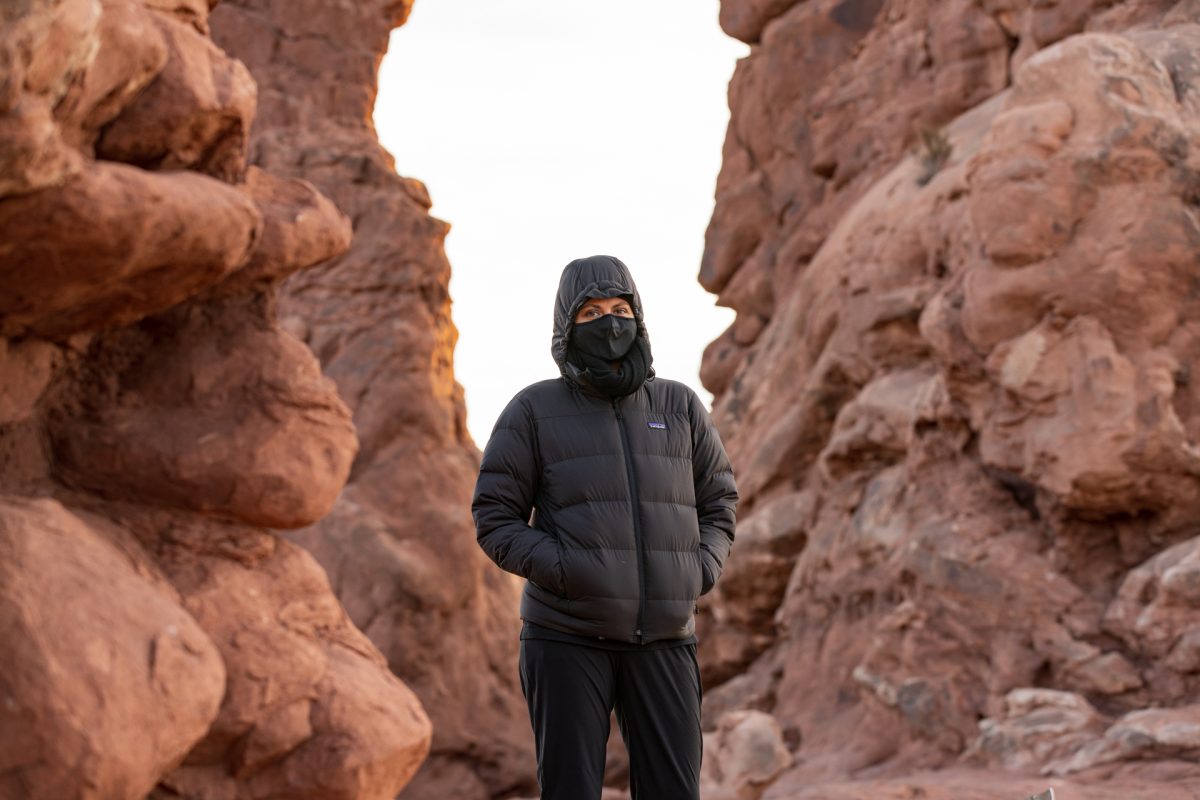The Campspot Guide to Arches National Park
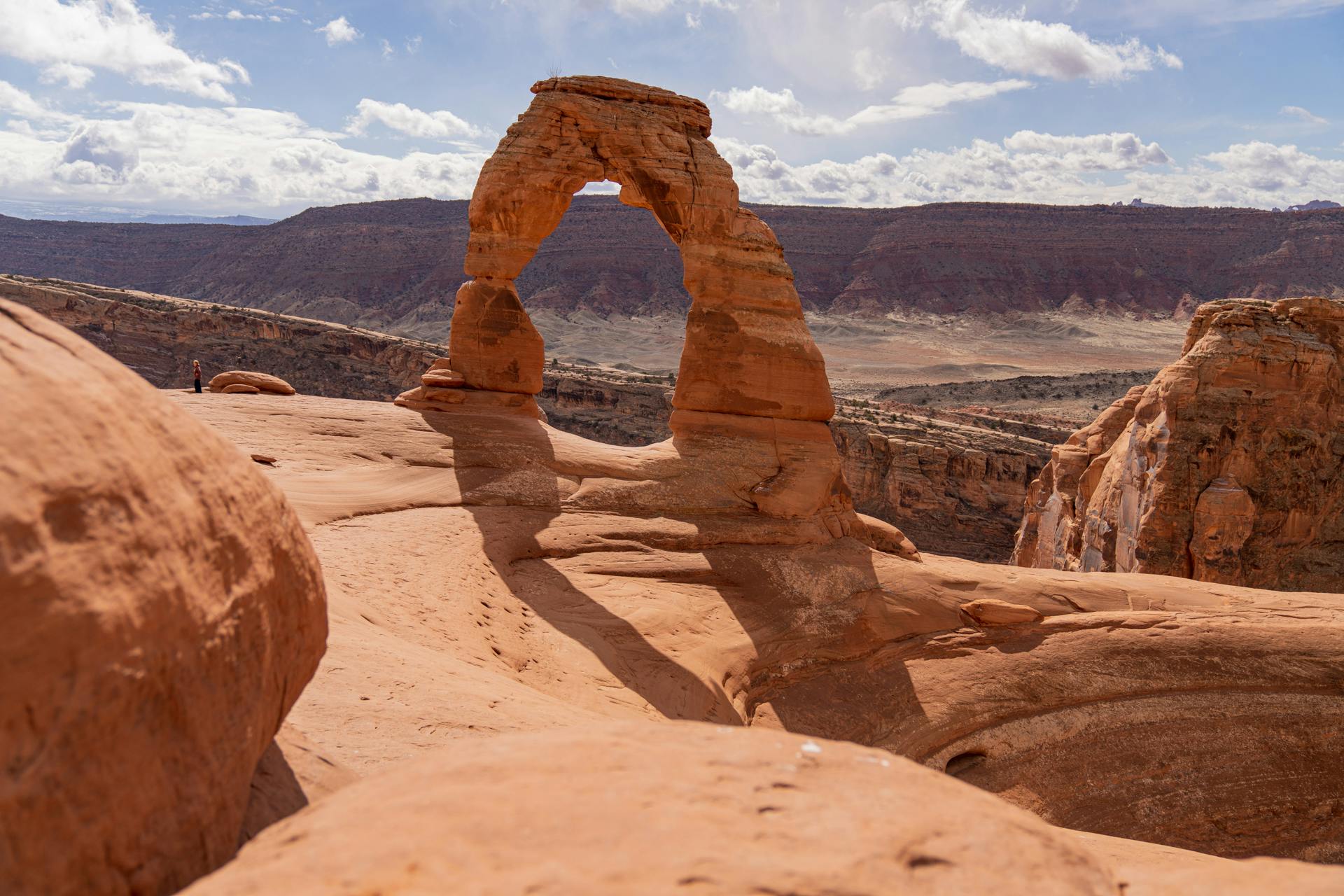
Located just five miles away from Moab on highway 191, Arches National Park is open year-round with plenty of activities for the ultimate Utah camping adventure. Here’s our Campspot Guide to help plan your trip to one of the most famous national parks in North America.
Quick Facts:
- The park hosts the largest concentration of natural sandstone arches with over 2,000 arches.
- A pass to the park costs $30 per vehicle and is good for seven days.
- The park accepts the US National Park Service’s (NPS) America the Beautiful annual pass.
- The park is open 24 hours a day, 365 days a year.
- As of February 2021, masks are required for visitors in all NPS buildings and facilities. Masks are also required when a physical distance of six feet cannot be maintained in overlooks, trails, and NPS-managed lands.
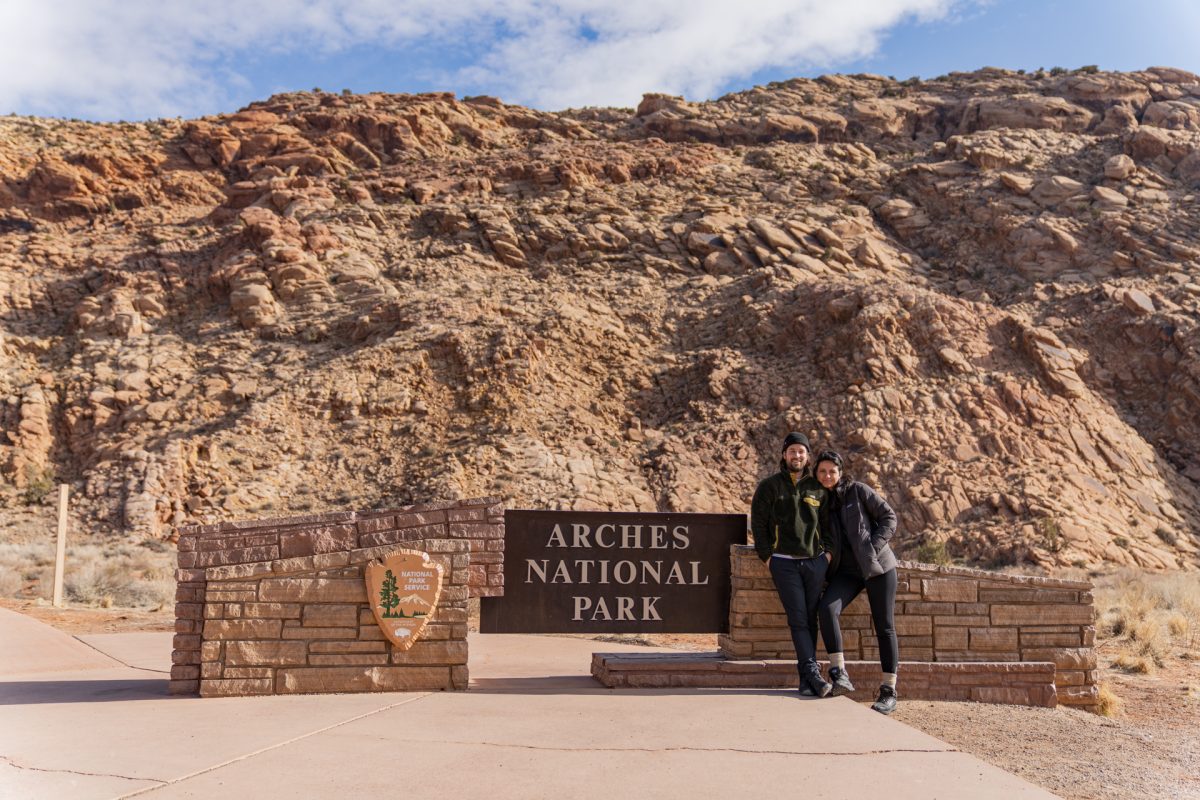
The Scenic Drive
If you’re short on time or want an overview of the park before jumping in, the 36-mile (round trip) scenic drive through the park will not disappoint. After arriving and setting up our Campspot at Moab Valley RV Resort & Campground later in the afternoon, there was still plenty of time to make our way to the park and drive the scenic drive. According to the NPS, an auto tour of the park can take 1.5 straight through and up to 4.5 hours if you spend 10 minutes at each viewpoint and visit the Windows Section and Delicate Arch Viewpoint.


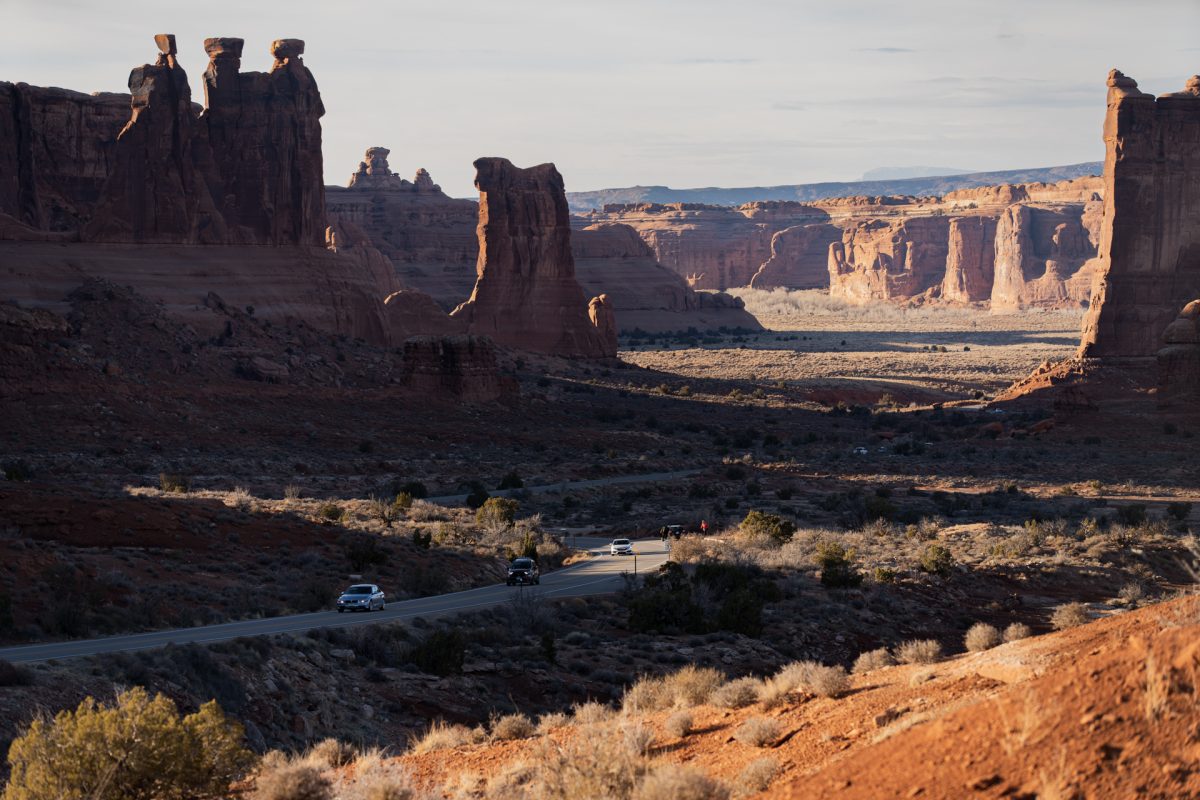

Park Avenue & Courthouse Towers
Congrats! You’ve made it to the park, driven through the steep switchbacks after the entrance, taking in the remote desert views at each turn, and made it to your first major area of the park only to find yourself back in the city, walking along Park Ave. That’s at least how the first visitors of the park felt.
These canyon walls’ steep height reminded early visitors of the urban landscape of the high-rise buildings lining a busy city street. Once you see it, you cannot unsee it as you hike the trail weaving through the canyon, leading you to the Courthouse Towers viewpoint.
The trail leads to the road as if you were to cut a corner further down the park road. To most, it makes the most sense as an out-and-back trail that’s 1.8 miles roundtrip. From the Park Avenue Parking area, climb down the steep stairs leading you into the canyon. From there, you hike down the wash to Courthouse Towers, where you’ll take a breather, turn around, and take in a different perspective of Park Avenue while heading back to the parking area.

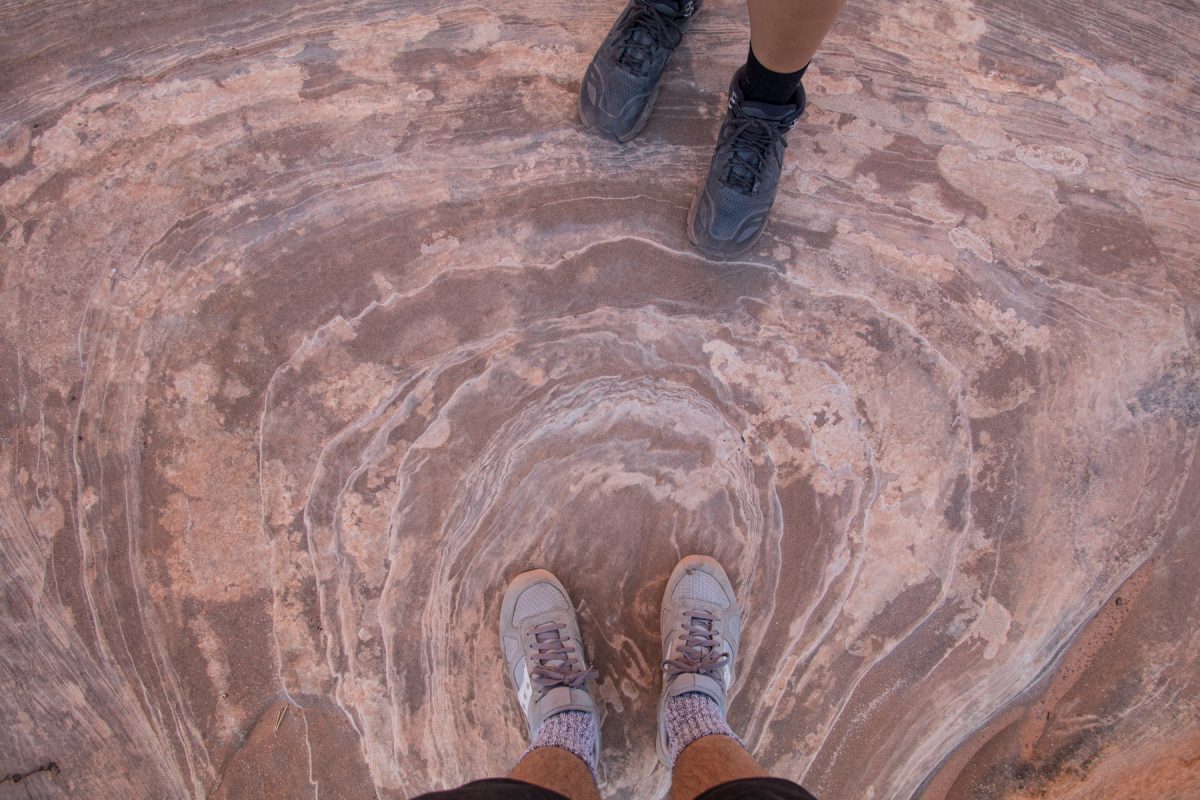

Balanced Rock
Standing at 128 feet high, Balanced Rock has become one of the most iconic sights at Arches National Park. This towering giant can be seen from the park road, but I highly recommend stopping and walking the short 0.3-mile roundtrip hike to see the 55 foot balancing rock from different angles. If unable to do the hike, a paved trail from the parking area leads to Balance Rock’s base. Because of its proximity to the park and road entrance, Balanced Rock is a popular stop to watch the sunset or do some night photography.

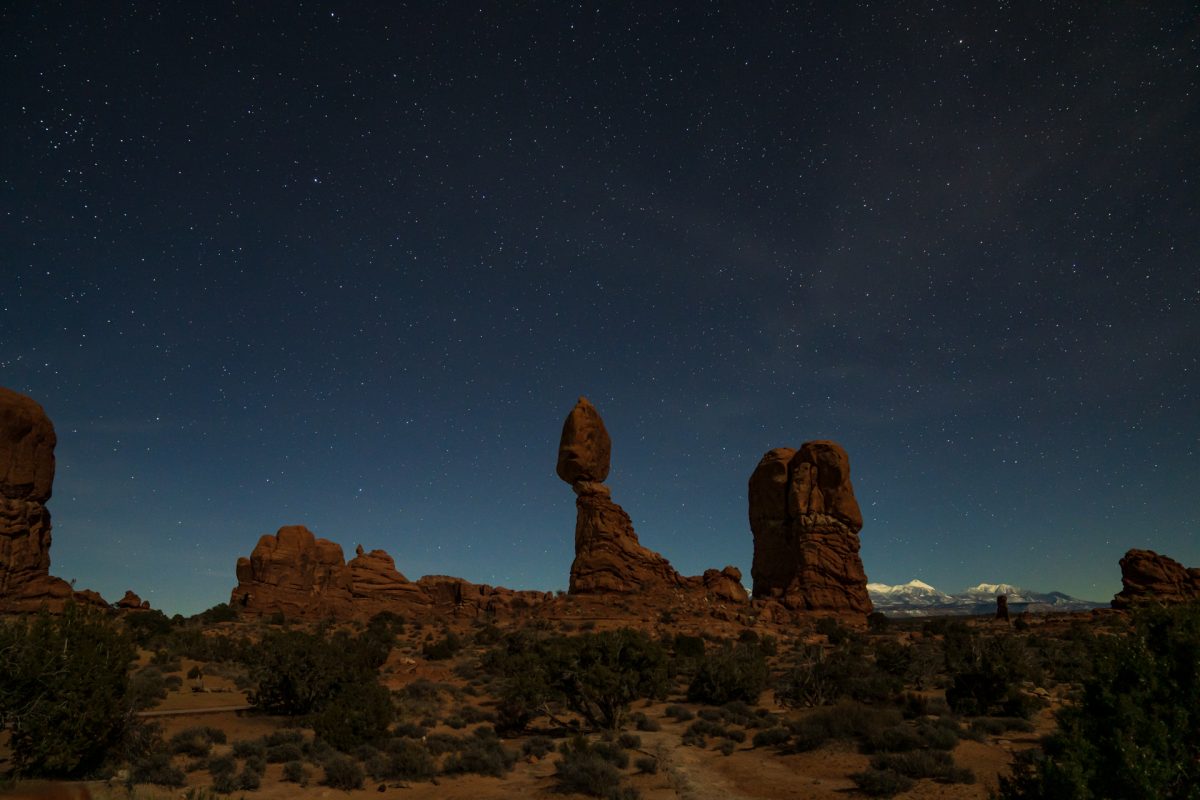
The Windows & Turret Arch
One of the grandest yet easiest trails in the park is the Windows Loop and Turret Arch Trail. In just a 1.2 mile loop, you’ll visit Turret Arch along with the North and South Windows. The trail varies, hard and flat at times, then changing to climbing up Slickrock. When the sun begins to set, the arches seem to glow. Yet, when the sun is closer to the horizon, Turret casts a shadow on the Windows.
Due to its short trail and look out to both the mountains in the east and horizon to the west, the location is popular during sunset. Its trail also lends handy for night photography and stargazing.
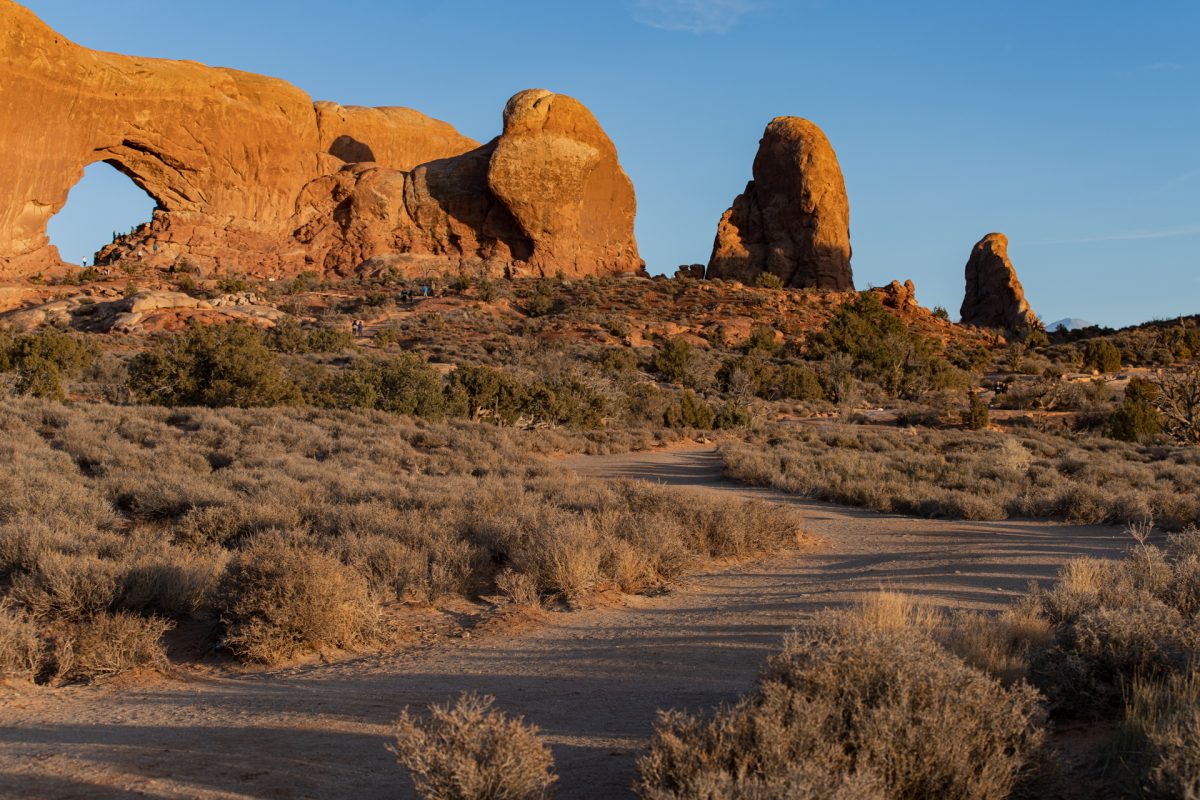


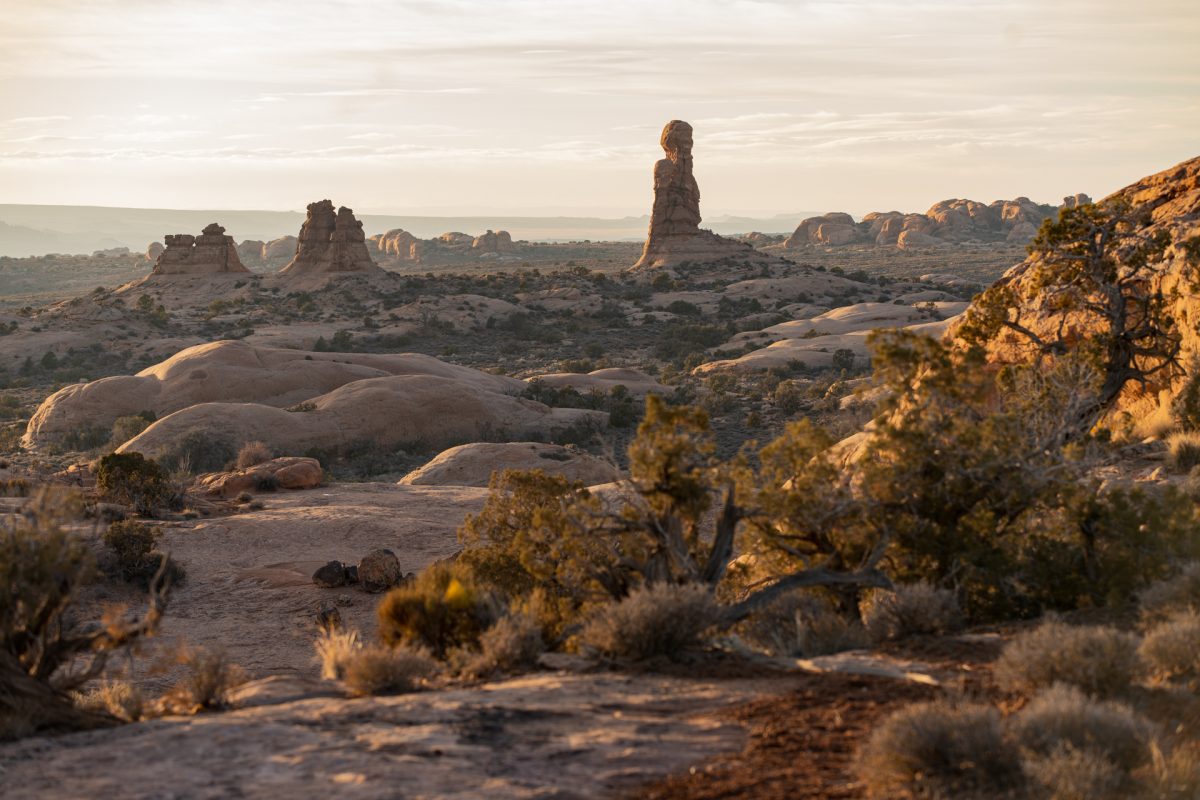
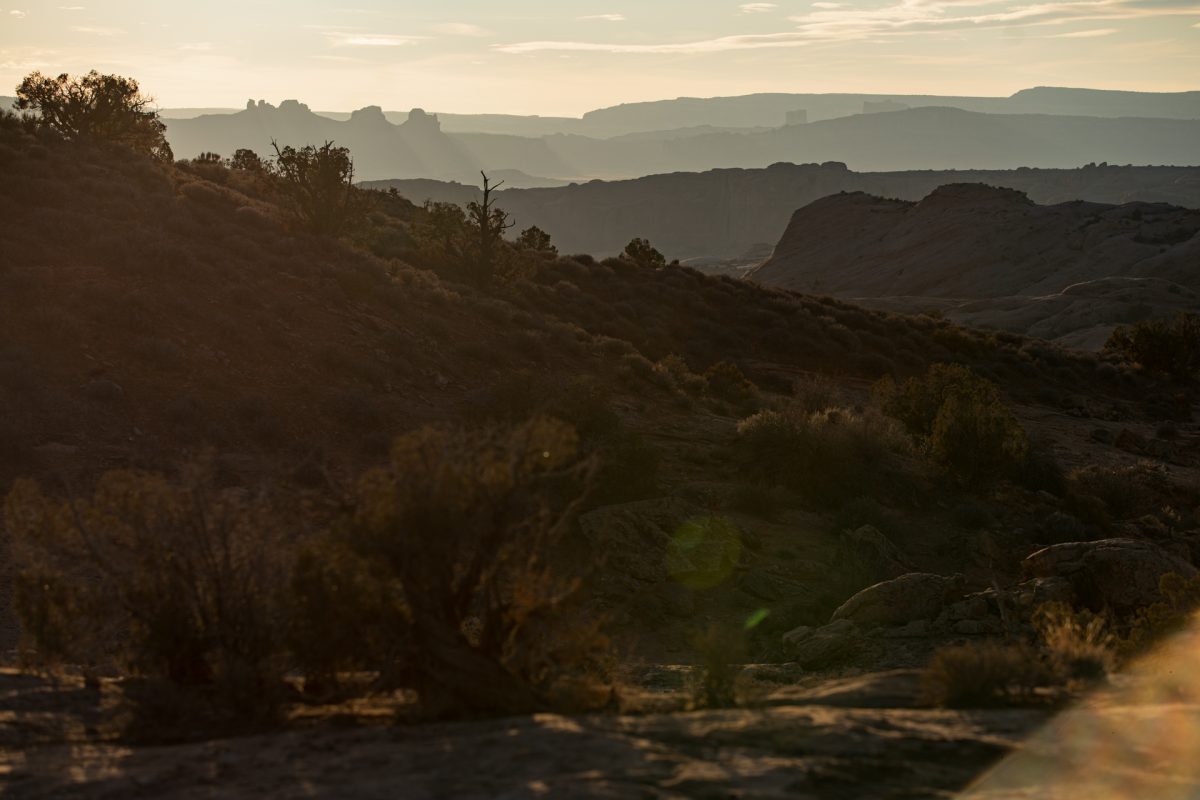
Delicate Arch
Arguably the most iconic arch of the park is Delicate Arch, one of Utah’s symbols as well as one of the most recognizable rock formations. There are two different ways to see the arch: from a distance on the Delicate Arch Viewpoint Trail or up close by hiking the Delicate Arch Trail.
Delicate Arch Viewpoint
If you only have a day in the park, a convenient but still impactful way to see Delicate Arch is from its viewpoint area. Right off the parking area, a flat accessible trail takes you to a lower viewpoint where you can see the free-standing arch in the sky. The upper viewpoint located just 0.5 miles up a relatively strenuous trail gives you a closer perspective of the arch from across the canyon.
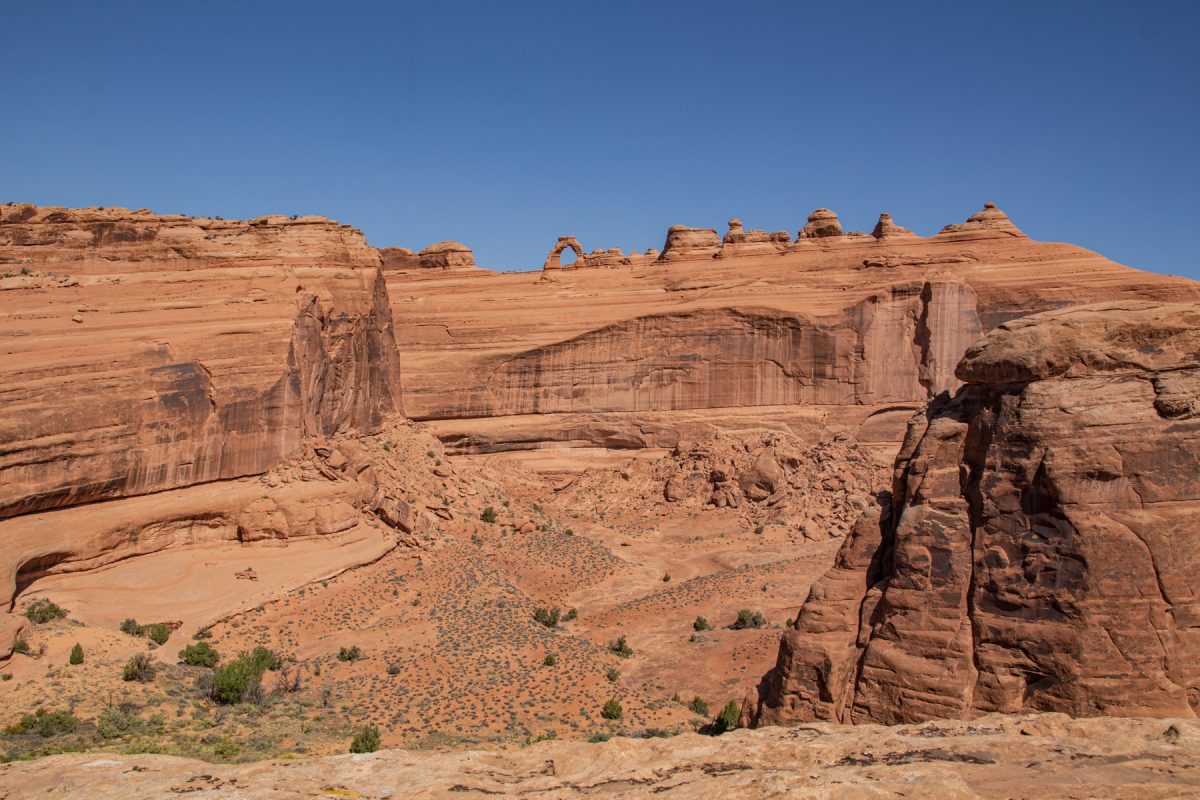

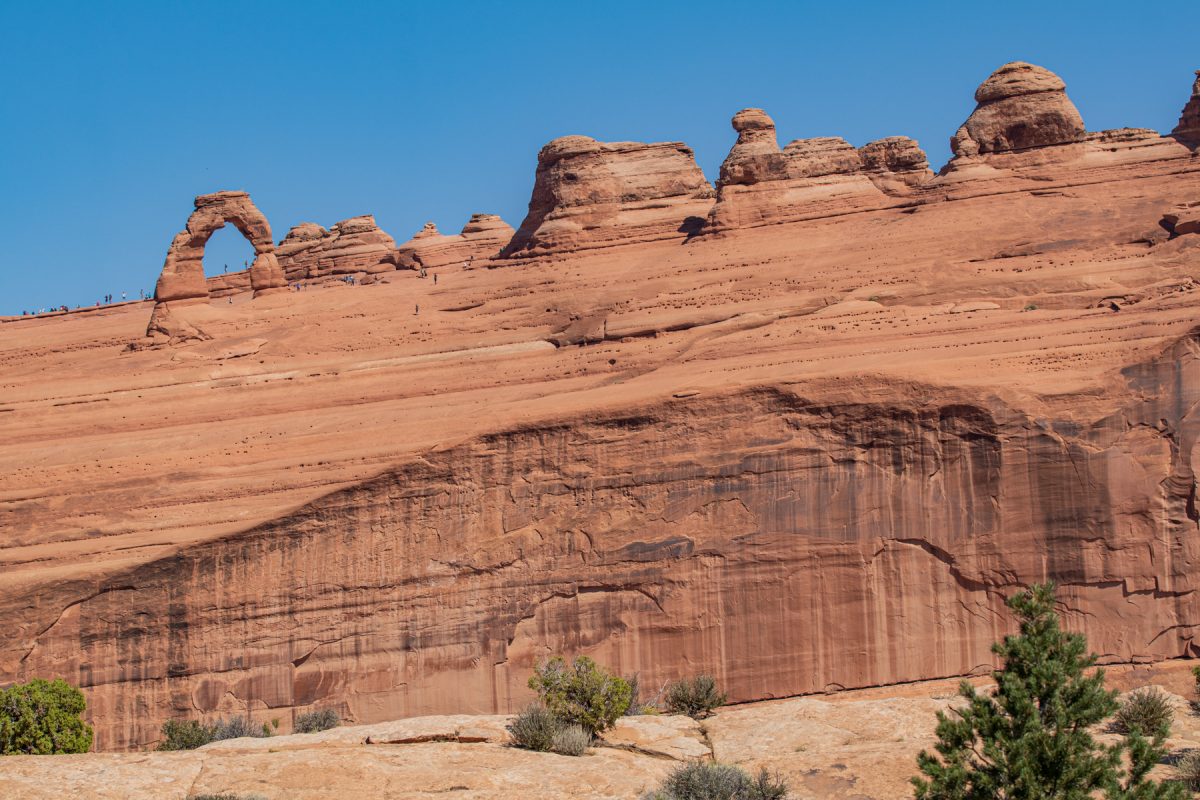
Delicate Arch Trail
Looking to see Delicate Arch up close and personal? Plan about 3 hours for the 3.5-mile out-and-back hike roundtrip. Rated as moderate, the trail has an elevation of 626 feet and doesn’t provide hikers with any shade as you’ll be mostly climbing up steep Slickrock. Because of this, it’s recommended that each person take at least one liter of water. For those who have a serious fear of heights, be aware that the trail goes along a rock ledge for about 200 yards at the very end. With this being said, the hike is safe with standard hiking vigilance and is completely doable for various ages. We saw families with toddlers and couples in their 70s hiking the trail.
A few last notes on Delicate Arch Trail: When hiking during the winter, there may be snow or ice accumulated on the Slickrock. Use caution and if impassible, opt for seeing Delicate Arch from its viewpoint. Additionally, because the hike is highly trafficked, the parking area can fill up quickly. Consider doing the hike early in the morning to avoid the crowds and heat during the warmer months.

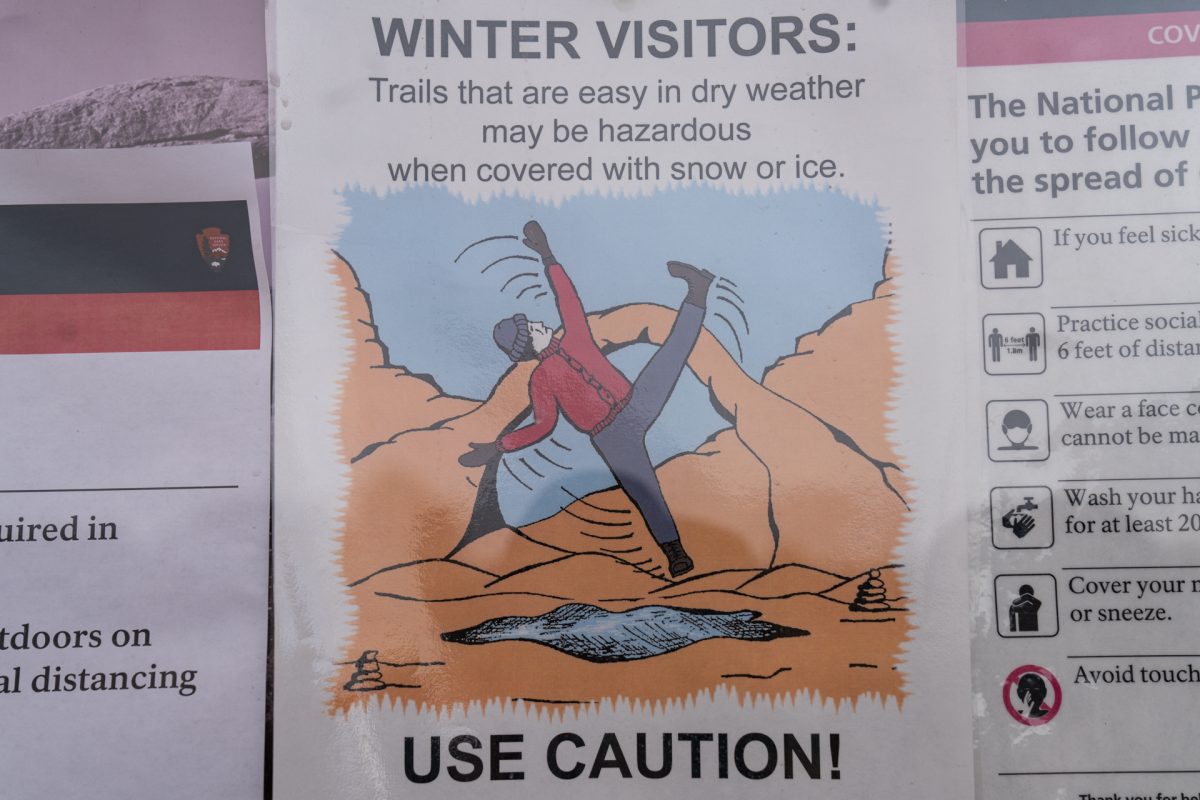



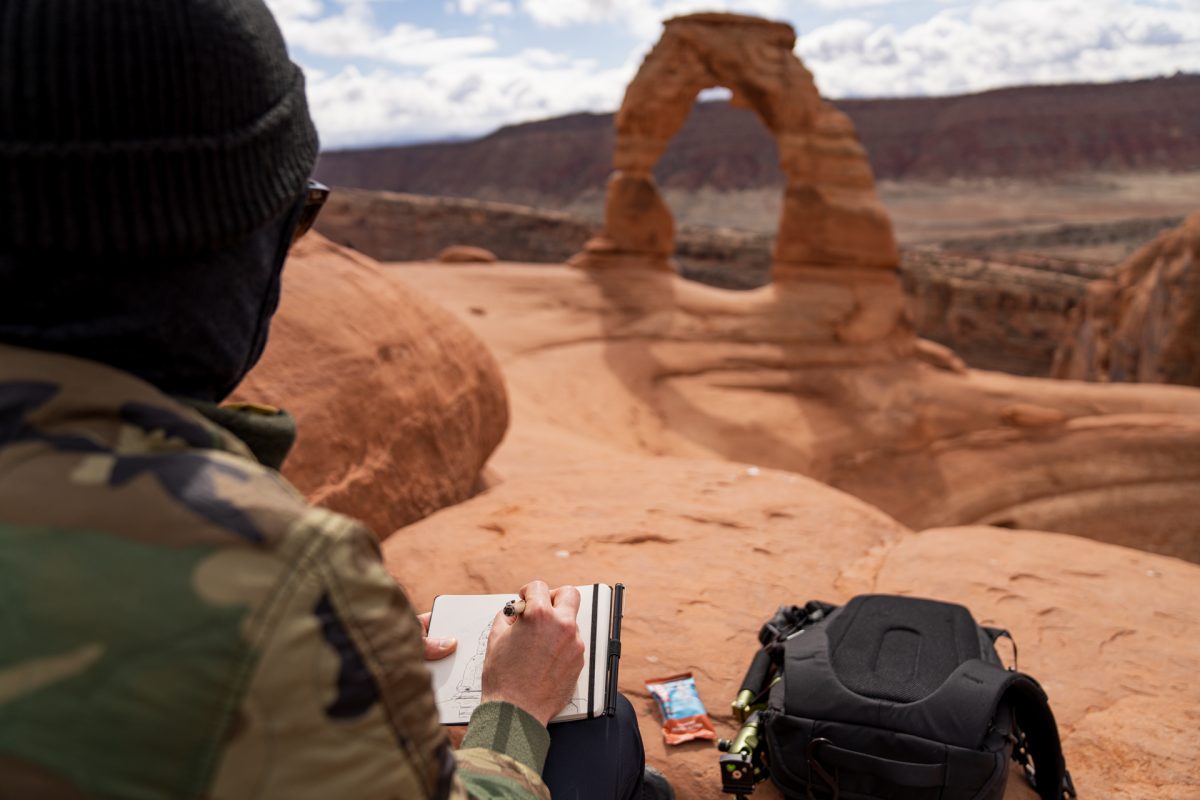




Delicate Arch Trail to Wolfe Ranch
Whether stopping on your way out or on your way back to the parking area, take the short detour to visit Wolfe Ranch and the Ute petroglyph panel. The accessible path is flat, hard-surfaced, and only takes a few minutes to walk through.
It’s estimated that the Ute rock art was carved between 1650 and 1850. The art depicts a horse and its rider surrounded by bighorn sheep and dog-like animals.
For several years in the early 1900s, the Wolfe family from Ohio lived in the standing cabin, grazing cattle. Flora Stanley took the first known photograph of Delicate Arch in 1906. It’s astonishing to see that not much has changed in over 100 years.



Devils Garden Trail
At the end of the park’s scenic 18-mile drive is the Devils Garden, an area packed with arches, spires, and “fins,” narrow rock walls. Activities and trails within Devils Garden vary from easy to difficult. Arches within the area include the Tunnel, Pine Tree, Landscape, Navajo, Private, and Double O Arches. The easiest arch to get to on the Devils Garden Trail is Landscape Arch. Anything beyond that is rated difficult.
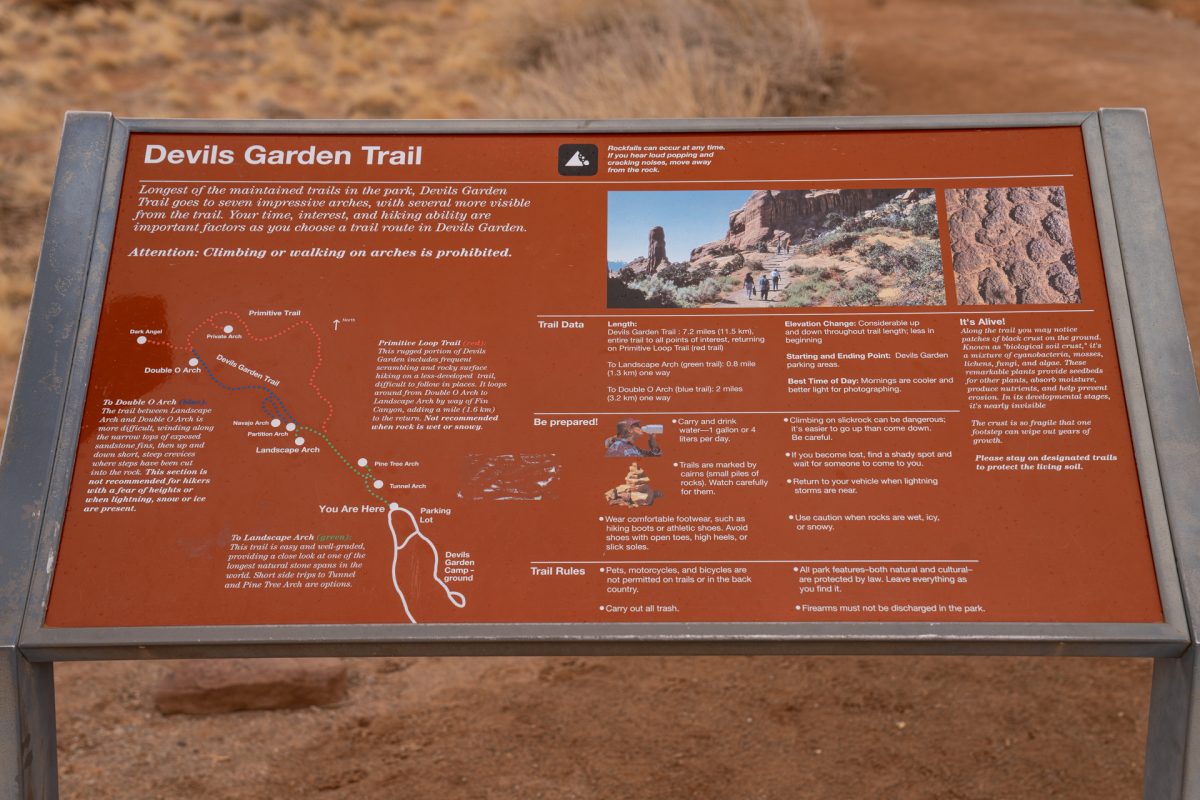
Landscape Arch
The main attraction of Devils Garden is Landscape Arch, the longest arch in North America with an opening of 306 feet! While visitors can walk under and around other arches throughout the park, Landscape Arch is now blocked off due to large portions of the structure crashing down in the 1990s. The plaque on the trail describes visitors resting underneath the arch, needing to run for safety after hearing loud cracking noises and smaller portions of rock coming down. Fortunately, no one was injured and all were able to find safety from the boulders that came from the right underside of the arch. Only six feet in diameter at its narrowest, the arch is fenced off, but can be easily seen from the trail.
Devils Garden trail to Landscape Arch begins at the parking lot, going through tall fins, and is just under two miles, roundtrip. This segment of the trail is rated easy as it’s mostly flat and without much elevation gain. Along the way to Landscape Arch, take in the varied rock formations, from spires to fins.

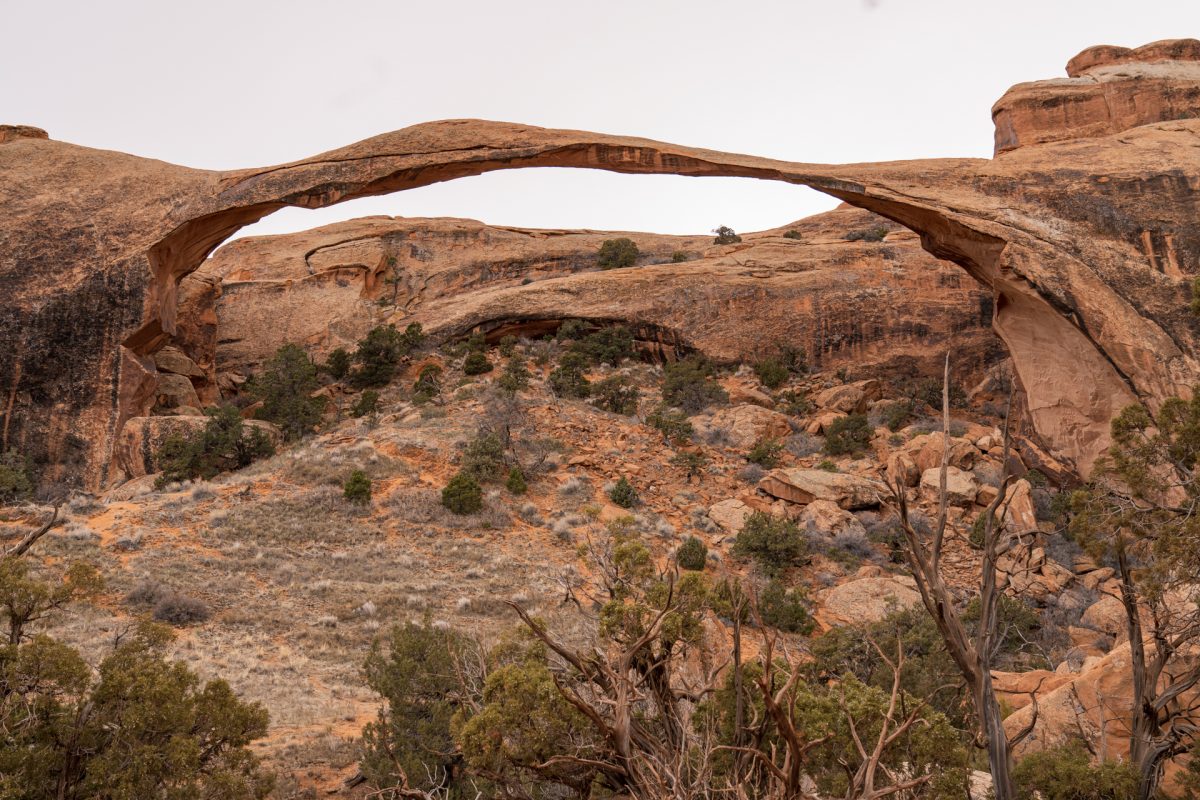
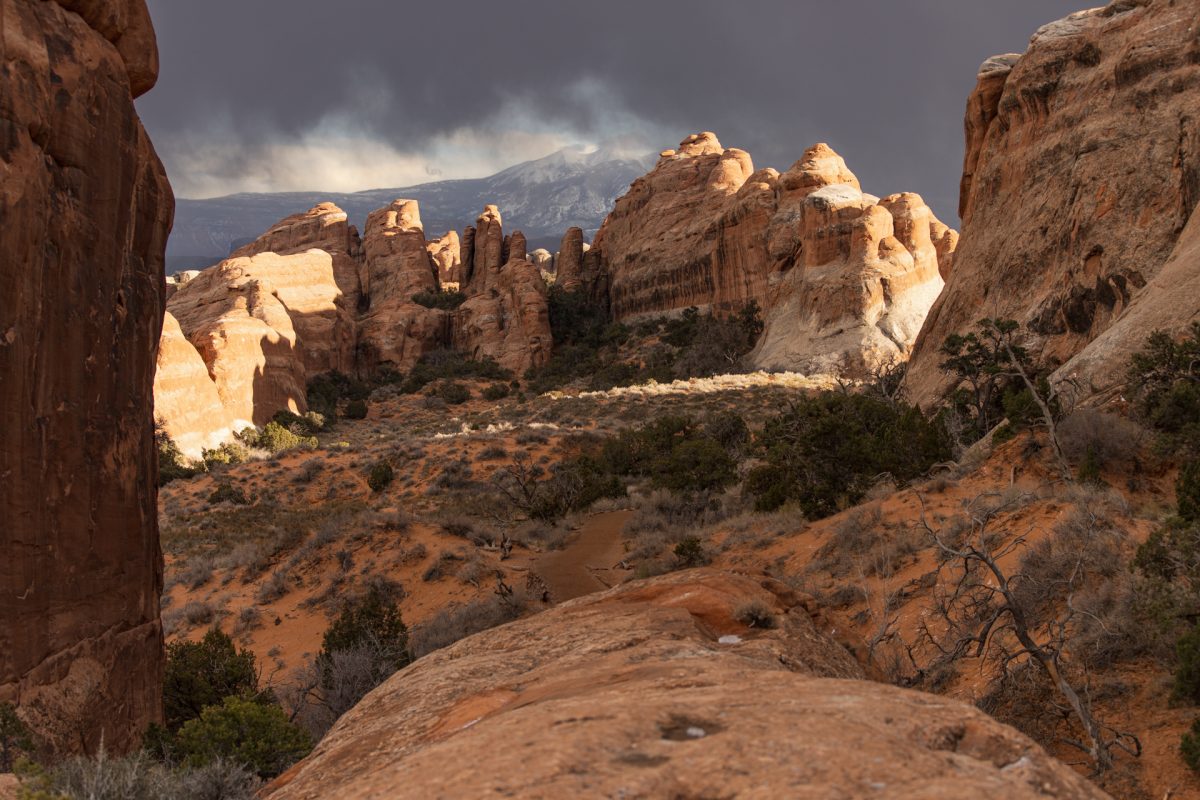
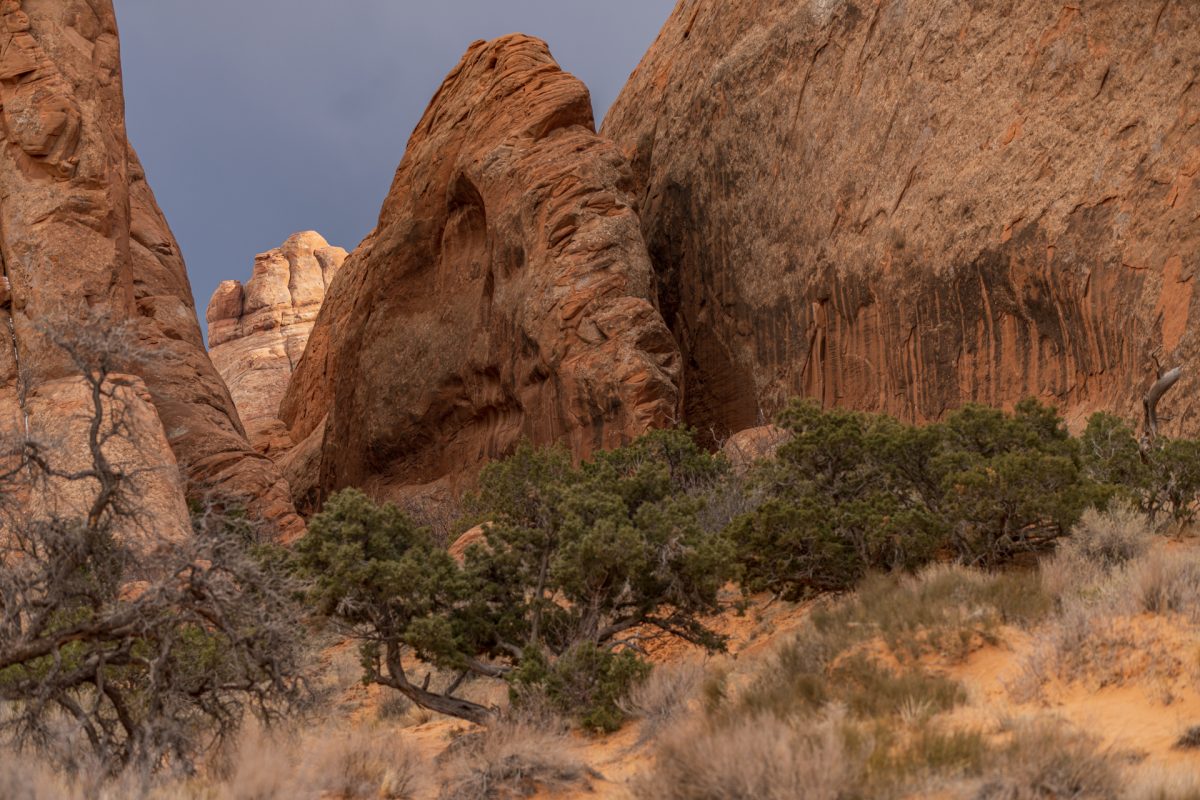

Arches at Night
Open at all times of the day and located in the dark sky country of Utah, Arches National Park is a great place to flex your night photography muscles. Whether you’re a thrill-seeker, using a flashlight to climbing your way to photograph Delicate Arch surrounded by the stars, or like us, opting for more approachable subjects at the Windows and Balanced Rock, your nighttime images will not disappoint. Even with hazy cloudy nights, we were still able to enjoy ourselves, looking out to the heavens.
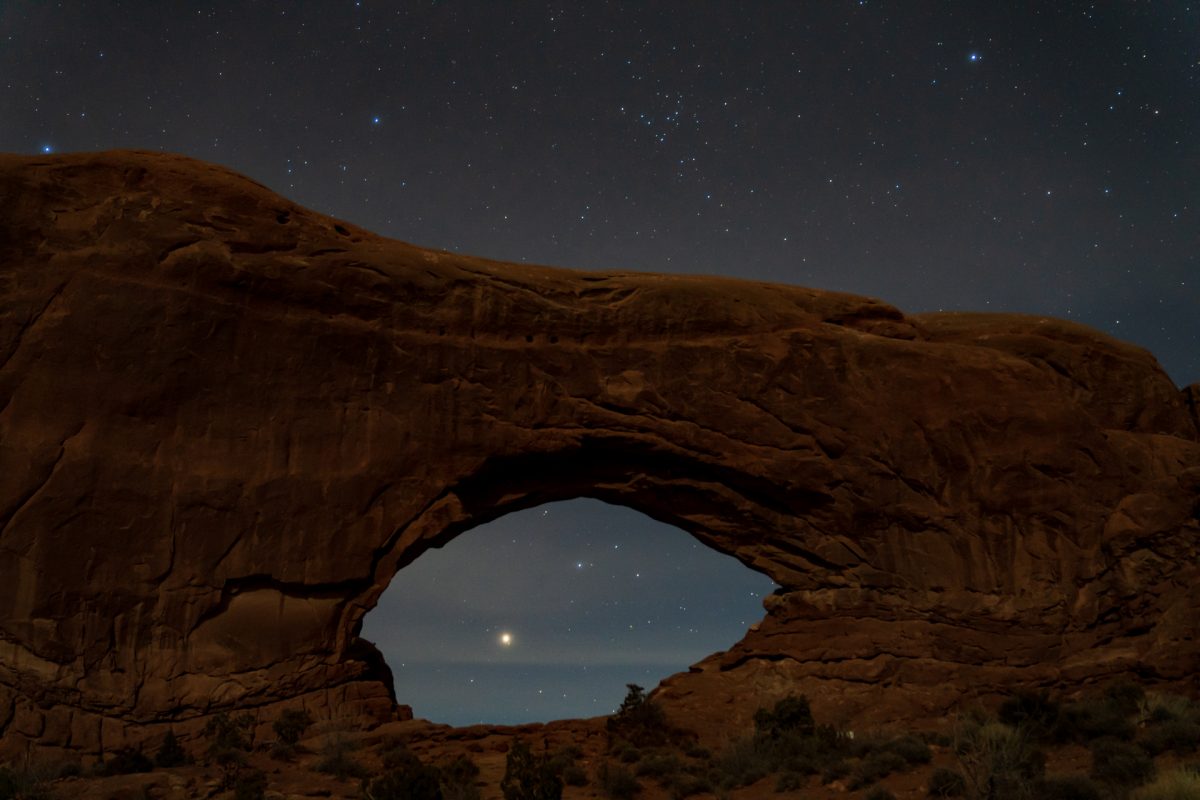

What to Bring
Water. Lots of it.
Because you’re in the desert, each visitor should drink at least one gallon of water each day. In fact, you should always carry and drink water during any and all activities, whether that’s in the car or hiking. It’s dry out there, folks!
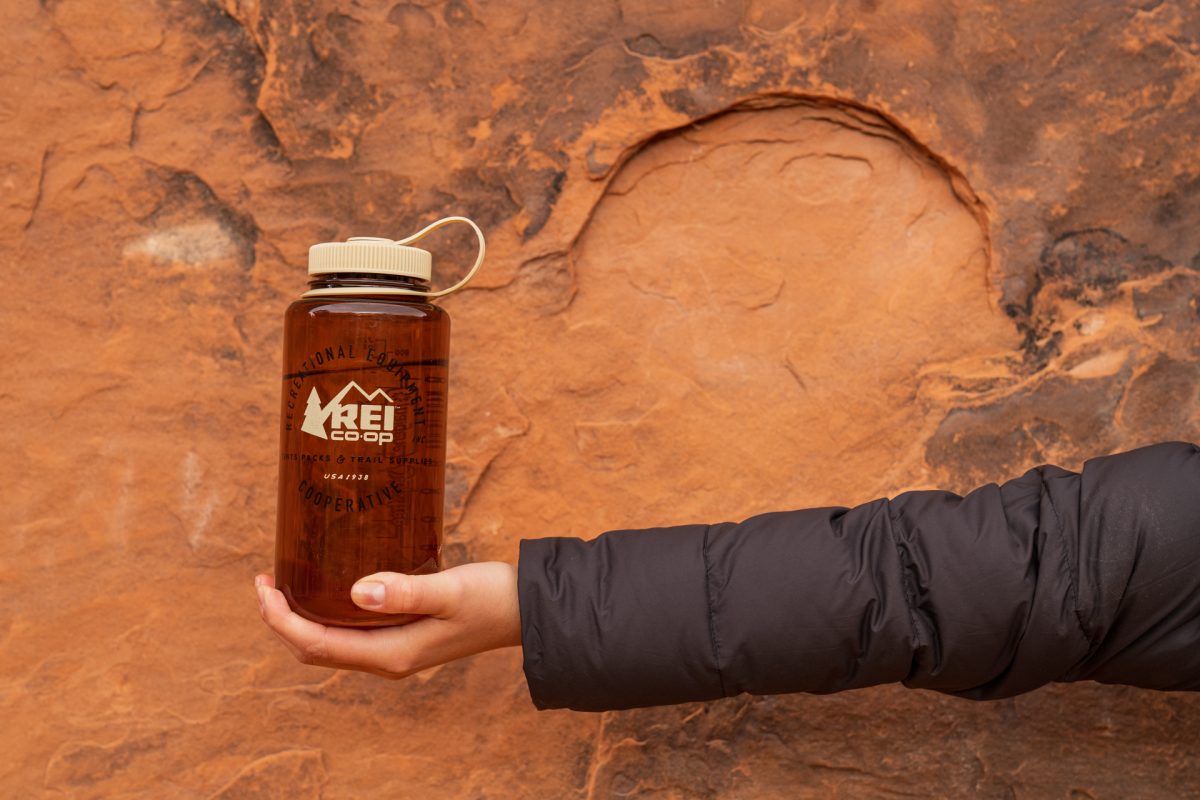
Proper Footwear
The NPS advises that visitors “Wear sturdy shoes with enough tread to give you good traction. Do not hike in smooth-soled shoes or boots. Some trails cover uneven terrain and follow rock ledges. In winter, trails may be icy. We recommend you wear traction devices on your shoes.”
Wearing the right footwear is going to give the confidence to hike the trails mentioned above and more! With such a variety of terrain, this is a must. I can’t tell you the number of times we see people wearing flip-flops or even high-heels! What the what?
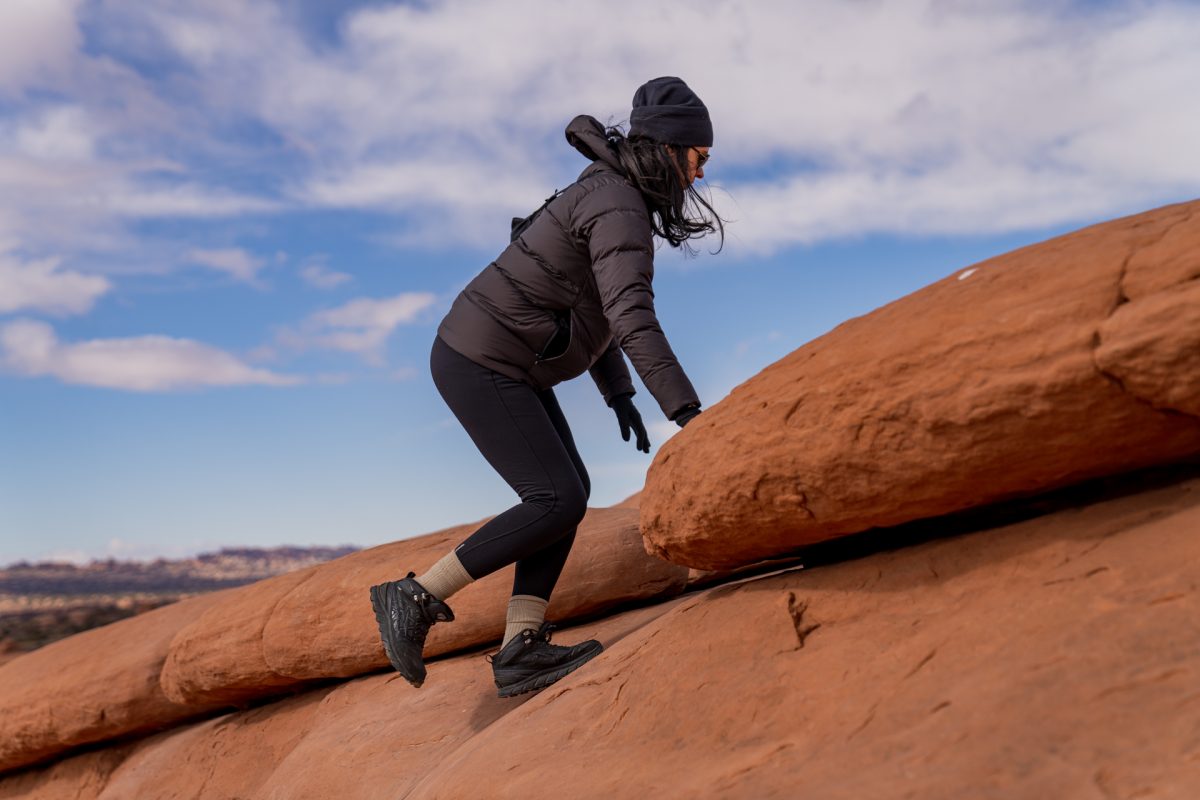

Snacks on snacks on snacks.
There aren’t any cafes or snack stands located within Arches National Park. You know what that means. Pack in and pack out! To help the body retain water, salty snacks are recommended. We like to bring high-calorie Clif and Kind bars on our hikes. An NPS Ranger at the Grand Canyon once told us that she brings peanut butter and jelly sandwiches on her hikes for sugar, salt, carbs, and protein. This advise has stuck with us through the years of RVing and living on the road.

Mask Up.
As stated above, face masks are required on NPS lands where physical distancing cannot be maintained and in all NPS buildings and facilities. This means you do not have to wear them outside when you maintain at least six feet of space from people not in your household. You’d be surprised how close you can get to others while hiking, so I’d recommend having your mask handy to slip on when seeing others coming in your direction. People from all over the world come and visit US National Parks. Do your part in stopping the spread of the coronavirus by wearing a mask.
